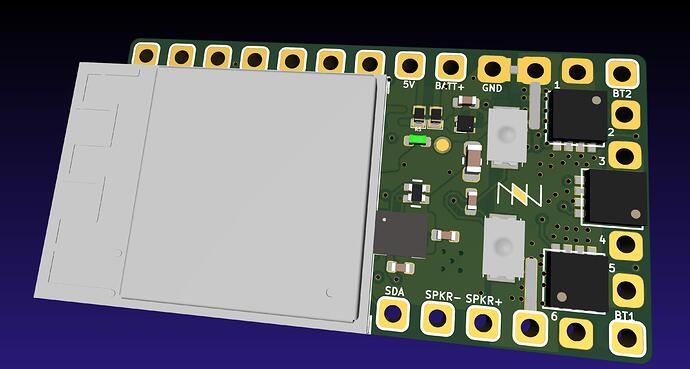ESP32 now boots proffieos (without all features)
Hmm, this looks like an interesting way to make the JTAG pads available without taking up too much space on the board:
This page shows how it works better:
At $1.50, it sure beats this thing:
That’s a really neat connector. Perfect for doing the initial programming of a board.
Would we all need the modified test clips described?
No, definitely not. If I end up using SOICBite, it would only be required for doing debugging.
The idea is to use up as little board space as possible for things that only a few people use.
Or these crazy things:
But I like the SOICbite idea, seems easy & efficient. Especially the availability/price of the clip.
Lmao, MOAR
Now for the most difficult part: Figuring out what to name the thing!
ESP32 Proffieboard?
ESProffieboard?
Proffieboard ESP32?
Proffieboard ES?
Proffieboard IOT?
Proffieboard NG?
Proffieboard W?
ProffieSP32?
EsproffIF?
Proffieboard \omega
Promega?
Proffieboard Wireless?
Proffieboard 32?
Proffieboard µ≋?
I could go on…
Yeah, I just found those things (FlexyPins) yesterday.
Ordered a thousand.
Ok, so the easy thing to do would be to use the ESP32-S3-MINI-1 module instead of using one of their chips. The module includes shielding, antenna, crystal and a bunch of other stuff which I won’t have to worry about if I use the module. The drawback is that even the smallest ESP32 module is not exactly tiny on the proffieboard scale. It could work though:
(Don’t get excited, it’s a concept drawing, not a finished design.)
The seven covered up soldering pads would have to be converted to single-sided solder pads, and the antenna part of the module would stick out about the same amount as the SD card.
My guess is that most existing chassis would be able to accommodate this with only minor modifications. The single-sided solder points would be used for things that are less likely to be used, like the JTAG pins maybe.
I might be able to do better if I use the ESP32-S3 chip directly instead of the module, but I’m not sure if it’s worth it.
Interesting discovery: It’s possible to configure the ESP32-S3 so that the USB connection functions like a JTAG debugger. I’m going to have to try that out, because that might need that I only need two pins (D+, D-) for debugging instead of four like I wrote earlier in this thread.
Also, it seems that the ESP32-S3 bootloader actually supports the DFU protocol while in bootloader mode. (Some earlier document I wrote suggested that the bootloader only supports uploads over serial.) Not sure how this will all fit together yet, but more options is always better. ![]()
The ESP32 also seem to have a number of features that will actually make it easier to program than the STM32:
- Flexible IO structure (most pins can do anything)
- RMT module can generate WS2811 and IR signals
- Any pin can be a wakeup pin (because the sleep mode is it’s own processor)
- Lots of interesting extended instructions which can accelerate DSP-like work. (Like audio filters.)
- Two cores
- Fast (240Mhz)
- Lots of ram and flash
Also, the documentation and available libraries seem to be fairly extensive.
How does it stack up, cost wise?
What about something like:
7mmx7mm, includes crystal oscillator, filter capacitors, RF matching links, and 4MB flash. I don’t see a shield, but it seems many dev boards are using bare chips so maybe its not needed?
If this is the direction Proffie is going, then “Proffieboard 3”. If it’s unclear, or you’re still holding out hope for STM in the future, then “Proffieboard E”.
And when we do RP2040 someday, that’ll be Proffieboard R. ![]()
The ESP32-PICO-D4 is just the QFN chip I htink.
However, there is a ESP32-PICO-MINI-02 which may be interesting, as it is smaller than the ESP32-S3-MINI-1 that I used for my concept drawing.
It would be tight, but it might fit between the rows of solder pads…
The ESP32-PICO-MINI-02 doesn’t have as many GPIOs though, which could be a problem.
Weirdly, I can’t seem to find any boards or even breakout boards for the ESP32-PICO-MINI-02 module…
ProffiESPboard
Edit: Or for those who don’t take things seriously, “Phil”
wouldn’t putting the antenna on the board inside the saber result in signal attenuation? All-metal sabers are basically cylindrical faraday cages…
Almost certainly.
We’ll need to do some testing to see how well it works.
People have been sticking blutooth chips in their sabers for a while, and that seems to work, so I’m cautiously optimistic.
